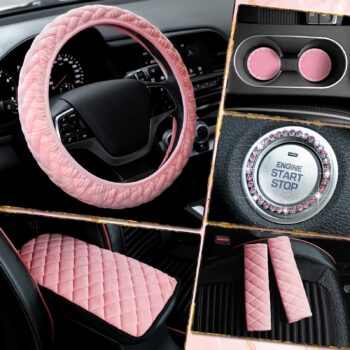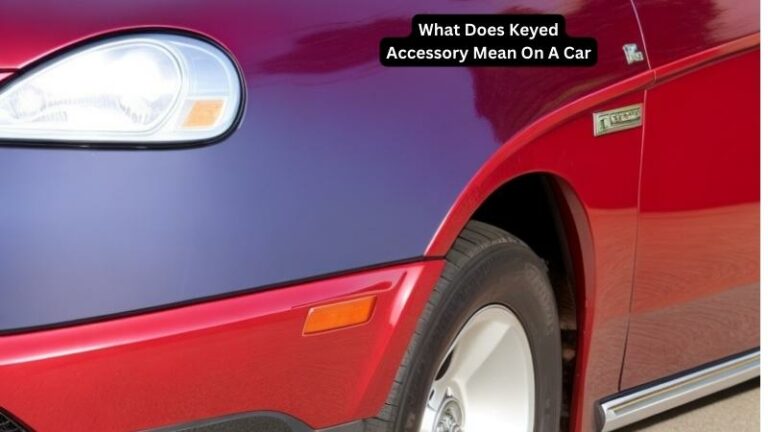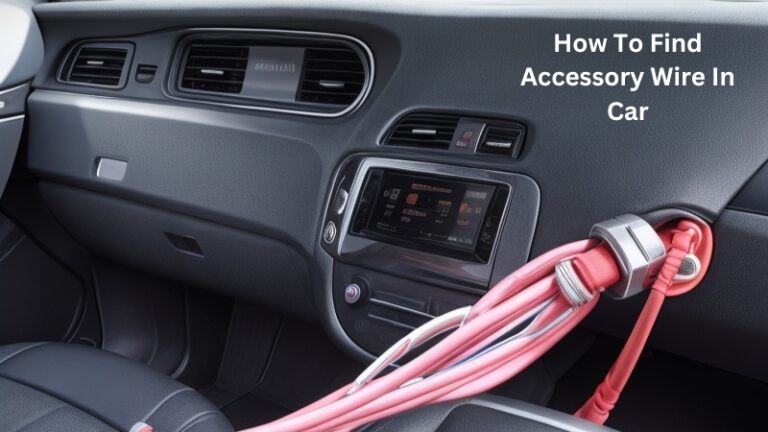How To Wire Accessories To Car Fuse Panels
Are you looking to enhance your car’s functionality and convenience? Adding accessories to your car’s fuse panel can unlock a world of possibilities, allowing you to power various devices and gadgets seamlessly. From installing a GPS navigation system to incorporating a dash cam or even upgrading your audio system, knowing how to wire accessories to your car’s fuse panel is a vital skill for any car enthusiast or DIY enthusiast. In this guide, we will delve into the intricacies of this process, providing you with a step-by-step tutorial on how to safely and effectively wire accessories to your car’s fuse panel. So, whether you’re a beginner or an experienced hobbyist, get ready to embark on a journey of automotive customization that will take your driving experience to the next level.
Imagine having the ability to charge your phone, power your air compressor, or even operate a mini refrigerator right from your car’s dashboard. With the right knowledge and techniques, this dream can become a reality. Wiring accessories to your car’s fuse panel not only adds convenience and functionality to your vehicle but also ensures that the electrical connections are secure and safe. In this comprehensive guide, we will cover everything you need to know about wiring accessories to your car’s fuse panel, including choosing the right fuse, identifying the correct fuse slot, and properly connecting the wires. Whether you’re a car enthusiast looking to personalize your ride or simply someone who wants to gain more control over their car’s electrical system, this guide will equip you with the necessary skills and knowledge to tackle this task with confidence. So, let’s dive in and unlock the potential of your car’s fuse panel together.
- Step 1: Identify the accessory you want to connect to the fuse panel.
- Step 2: Locate the car’s fuse panel, usually found near the driver’s side footwell.
- Step 3: Use a fuse tap or add-a-circuit to connect the accessory to an available fuse slot.
- Step 4: Connect the accessory’s positive wire to the fuse tap and the negative wire to a suitable ground point.
- Step 5: Test the accessory to ensure it works properly.

How to Wire Accessories to Car Fuse Panels
Wiring accessories to your car’s fuse panel can provide a convenient and organized way to power various devices in your vehicle. Whether you want to install additional lighting, a sound system, or other electronic equipment, following these step-by-step instructions will help you achieve a clean and professional installation. Before starting, make sure you have the necessary tools and materials, including a wiring harness, wire strippers, electrical tape, and a fuse tap kit.
Step 1: Identify a Suitable Fuse Slot
The first step is to identify a suitable fuse slot in your car’s fuse panel to tap into. This should be a fuse slot that is not critical for the operation of any essential vehicle systems. It’s important to consult your car’s owner manual or a wiring diagram to ensure you choose the correct fuse slot. Once you have identified the appropriate fuse slot, turn off your car’s ignition and remove the fuse from the slot.
Note: It’s highly recommended to use a fuse tap kit that provides a secure and reliable connection without the need for cutting or splicing into existing wiring.
Step 2: Prepare the Wiring Harness
Prepare the wiring harness by stripping the insulation from the end of the wire that will be connected to the fuse tap. Use wire strippers to remove about 1/2 inch of insulation, ensuring that the bare wire is clean and free from any frayed strands. Insert the stripped end of the wire into the appropriate terminal on the fuse tap and secure it tightly.
Tip: It’s a good practice to solder the connection between the wire and the fuse tap for added strength and reliability. If soldering, make sure to let the connection cool down before proceeding to the next step.
Step 3: Connect the Fuse Tap
Connect the fuse tap to the identified fuse slot in your car’s fuse panel. Insert the original fuse into the top slot of the fuse tap, and insert a new fuse of appropriate rating into the bottom slot. Make sure the fuse tap is securely inserted into the fuse panel, ensuring a tight and reliable connection.
Important: Always use a fuse of the correct rating for the accessories you are powering. Using a higher-rated fuse can cause damage to your vehicle’s electrical system and pose a safety hazard.
Step 4: Route and Secure the Wiring
Route the wiring harness neatly along existing wire runs or through designated channels in your vehicle. Use zip ties or electrical tape to secure the wiring and prevent it from moving or rubbing against sharp edges. Make sure to avoid any hot or moving parts, and ensure that the wiring does not interfere with the safe operation of any vehicle systems.
Note: If you are installing multiple accessories, consider using a fuse block or distribution panel to manage the power distribution more efficiently. This will allow you to easily add or remove accessories without the need for tapping into individual fuse slots.
Step 5: Test and Verify
Before reinstalling the fuse panel cover and turning on your vehicle’s ignition, test the accessories you have wired to ensure they are functioning properly. Check for any signs of overheating or abnormal behavior. If everything is working as expected, securely reinstall the fuse panel cover and enjoy your newly wired accessories!
Frequently Asked Questions
Here are some frequently asked questions about how to wire accessories to car fuse panels.
Question 1: What is a car fuse panel?
A car fuse panel, also known as a fuse box or fuse block, is a part of the vehicle’s electrical system that houses fuses and relays. It is responsible for protecting the electrical circuits from overloads and short circuits by breaking the circuit when a fault is detected.
The fuse panel is typically located under the dashboard or in the engine compartment, and it contains multiple fuse slots where the fuses are inserted to provide electrical protection.
Question 2: Why would I want to wire accessories to my car fuse panel?
Wiring accessories to your car fuse panel can offer several advantages. Firstly, it allows you to tap into the vehicle’s electrical system to power additional devices or accessories, such as extra lights, audio equipment, or charging ports. This eliminates the need for running separate power cables from the battery, making the installation cleaner and more convenient.
Secondly, wiring accessories to the fuse panel ensures that they are properly fused and protected. The fuse panel acts as a central hub for electrical distribution, allowing you to easily manage and control the power supply to different accessories without the risk of overloading the circuits.
Question 3: How do I wire accessories to my car fuse panel?
To wire accessories to your car fuse panel, you will need to follow these steps:
1. Identify an appropriate fuse slot: Choose a fuse slot that has the rating and capacity suitable for the accessory you want to connect. Refer to your vehicle’s manual or consult with an expert if you are unsure.
2. Prepare the wiring: Cut a length of wire that reaches from the accessory to the selected fuse slot. Strip the ends of the wire to expose the bare copper strands.
3. Connect the wire: Attach one end of the wire to the positive terminal of the accessory, and the other end to the appropriate fuse slot. You can use a fuse tap or a crimp connector to make the connection secure.
4. Install the fuse: Insert the appropriate fuse for your accessory into the fuse tap or the fuse slot, depending on the type of connection you made.
5. Test and secure the wiring: Double-check all connections and ensure they are secure. Test the accessory to ensure it is functioning correctly. Finally, secure any loose wires and ensure they are well-insulated to avoid any potential short circuits.
Question 4: Can I wire multiple accessories to the same fuse slot?
While it is technically possible to wire multiple accessories to the same fuse slot, it is generally not recommended. Each fuse slot in the car fuse panel is designed to handle a specific load, and exceeding that load can result in blown fuses or damage to the electrical system.
If you need to connect multiple accessories, it is advisable to distribute the load across different fuse slots or consider using additional fuse panels or distribution blocks. This ensures that each accessory receives the appropriate power supply and prevents any overload or short circuit situations.
Question 5: Are there any safety precautions I should take when wiring accessories to my car fuse panel?
Yes, there are a few safety precautions you should keep in mind when wiring accessories to your car fuse panel:
1. Disconnect the battery: Before starting any wiring work, disconnect the vehicle’s battery to prevent any accidental short circuits or electrical shocks.
2. Use the correct wire gauge: Ensure that you use the appropriate wire gauge for the accessory’s power requirements. Using wire that is too thin can cause voltage drops and overheating, while using wire that is too thick may not fit properly in the fuse slot.
3. Double-check the polarity: Make sure you connect the wires to the correct terminals to avoid reversing the polarity. Reversed polarity can damage the accessory or even the vehicle’s electrical system.
4. Secure the wiring: Ensure that all connections are properly secured and insulated to prevent any loose wires or exposed metal that could cause short circuits or electrical hazards.
5. Follow manufacturer instructions: Always refer to the manufacturer’s instructions or guidelines specific to the accessory you are wiring. They may provide additional safety precautions or unique wiring requirements.
In conclusion, learning how to wire accessories to car fuse panels is a valuable skill for any car enthusiast or DIY enthusiast. By understanding the basics of electrical connections and fuse panel configurations, you can confidently install a wide range of accessories to enhance your driving experience. Whether you want to add extra lighting, install a new sound system, or power up your favorite gadgets, following the proper wiring techniques will ensure a safe and efficient installation.
Remember, safety should always be your top priority when working with car electrical systems. Take the time to gather the necessary tools and materials, carefully plan your wiring route, and double-check all connections to avoid any potential hazards. With patience, attention to detail, and a little bit of knowledge, you can successfully wire accessories to your car fuse panels and enjoy the convenience and functionality they bring. So, take the plunge, embrace the challenge, and embark on this exciting journey of customizing your car’s electrical system. Happy wiring!






